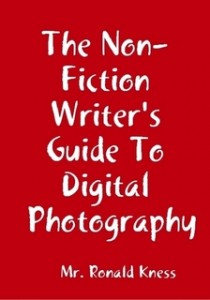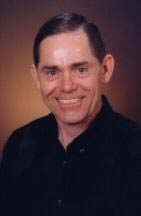 WRITERS. ARTISTS. DESIGNERS. According to photojournalist/author Ronald Kness, non-fiction writers can earn more money when they submit photos along with their text. That’s why he wrote an e-book entitled “The Non-Fiction Writer’s Guide to Digital Photography.” But knowing the basics of taking good photographs could be equally beneficial to artists who are documenting their everday work or exhibitions or designers who are creating promotional materials.
WRITERS. ARTISTS. DESIGNERS. According to photojournalist/author Ronald Kness, non-fiction writers can earn more money when they submit photos along with their text. That’s why he wrote an e-book entitled “The Non-Fiction Writer’s Guide to Digital Photography.” But knowing the basics of taking good photographs could be equally beneficial to artists who are documenting their everday work or exhibitions or designers who are creating promotional materials.
If you’re new to photography, you might benefit from the new e-course Kness has developed for The Virtual University. Entitled “A Beginner’s Guide to Digital Photography,” the course is designed to help you cut through the confusion of digital camera menus and learn how to take high-quality, vivid shots every time. You can study at your own pace from the comfort of your own home.
The course provides plain-English explanations of common terminology as well as:
- Digital camera features (how and when to use them).
- Camera menu systems (how to select the best settings based on lighting, distance, and other factors).
- The Golden Triangle (how to use ISO, aperture control, and shutter speed to take the quality of your images to the next level).
- The Rules and Composition (the 10 elements that have the greatest impact on image quality).
- Lenses and Filters (how and when to use them).
The course includes tutorials, suggested readings, and optional homework activities. Plus, you can upload your images and receive helpful guidance and critiques from Ron Kness.

If you need a bio picture (or “head shot”) for online publishing or self-marketing purposes, Kness will explain how to shoot self-portraits in the most flattering light. He will also provide tips for selling photos on popular websites such as iStockphoto, Bigstock, Dreamstine, and Shutterstock.
Kness has taught digital photography in a traditional classroom for the past seven years and is a featured columnist in “Writer’s Journal” magazine. Plus, he has ghost-written books on how to make money with digital photography and how to make money selling micro-stock photography.
The fee for “The Beginner’s Guide to Digital Photography” is $20. The suggested e-book (“The Non-Fiction Writer’s Guide to Digital Photography”) can be purchased in PDF form for $9.95.
All course materials will be available to you when you start the class, so you don’t have to wait for weekly lessons. You can learn at your own pace. You will have three months to complete the course.
LINKS
Virtual University Course: A Beginners Guide to Digital Photography
